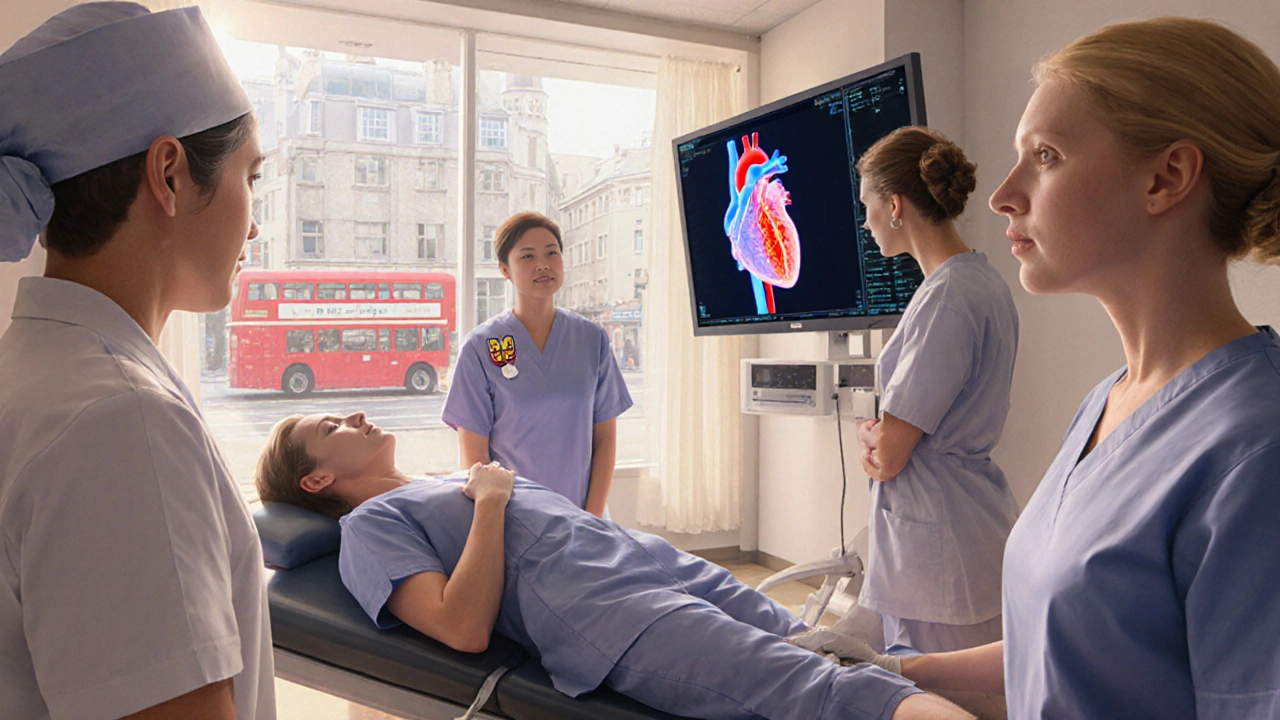Heart Procedure: A Practical Guide
If you or a loved one is facing a heart procedure, it’s normal to feel a mix of curiosity and worry. The good news is that most cardiac interventions are routine, well‑studied, and have solid safety records. This guide breaks down the main types of procedures, what happens on the day of treatment, and how you can prepare to make the experience smoother.
Common Types of Heart Procedures
When doctors talk about a "heart procedure," they usually mean one of three categories:
Angioplasty and stent placement: A thin tube (catheter) is guided through a blood vessel to the narrowed artery. A balloon inflates to open the blockage, and a tiny metal mesh (stent) keeps the artery open. The whole process often takes less than an hour and you can go home the same day.
Coronary artery bypass graft (CABG): In a bypass surgery, the surgeon takes a healthy vein or artery from another part of your body and creates a new route around the blocked artery. This is a more invasive operation, typically requiring a few days in the hospital and several weeks of recovery.
Heart valve repair or replacement: If a valve leans toward leaking or doesn’t open fully, doctors may repair it minimally or replace it with a mechanical or tissue valve. The procedure can be done through a small incision (transcatheter) or via open‑heart surgery, depending on the valve and your health.
Other procedures, like pacemaker implantation or electrophysiology studies, also fall under the heart‑procedure umbrella. Each has its own timeline and after‑care plan, but the core ideas—diagnose, fix, and monitor—remain the same.
Preparing for Your Procedure
Preparation starts well before the day of surgery. Here are steps that usually make a big difference:
Talk to your team: Ask your cardiologist or surgeon any question you have. Knowing why a specific procedure is recommended helps you feel in control.
Medication review: Some drugs, especially blood thinners, may need to be paused. Your doctor will give a clear list of what to keep, stop, or switch.
Fasting rules: For most procedures, you’ll be asked not to eat or drink after midnight. Follow the exact timing—they’re important for anesthesia safety.
Pack a recovery kit: Include loose clothing, a water bottle, any prescribed meds, and a list of emergency contacts. Having these basics at hand cuts stress after you wake up.
Plan support: Arrange for a family member or friend to drive you home and stay for the first 24‑48 hours. They can help with medication reminders and spotting any unusual symptoms.
On the day of the procedure, arrive early, breathe deep, and trust the team. Most cardiac teams walk you through every step, from the pre‑op check‑in to the post‑op recovery room.
After the procedure, follow the discharge instructions carefully. This usually means taking prescribed meds on schedule, watching the incision site for signs of infection, and gradually increasing activity. Light walking is often encouraged within the first day—movement helps prevent blood clots and speeds healing.
If you notice any new chest pain, shortness of breath, or swelling in the legs, call your doctor right away. These could be signs of complications that need prompt attention.
Remember, a heart procedure is a tool to improve blood flow and overall heart health. With the right prep and post‑care, many patients return to normal life faster than they expect. Stay informed, ask questions, and lean on your support network—you’re already on the right track.
How Cardiac Catheterization Helps Treat Hypertrophic Subaortic Stenosis
Explore how cardiac catheterization diagnoses and treats hypertrophic subaortic stenosis, its procedure steps, benefits, risks, and how it stacks up against surgery and medication.
